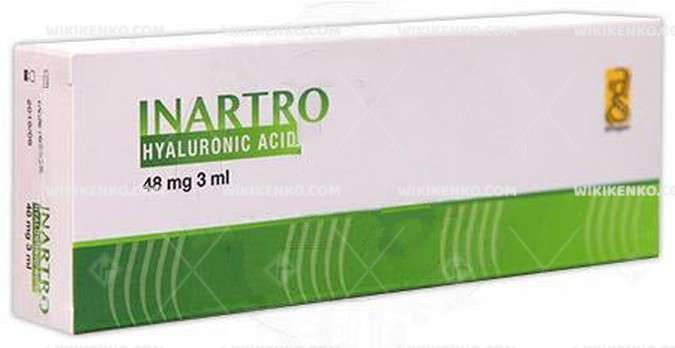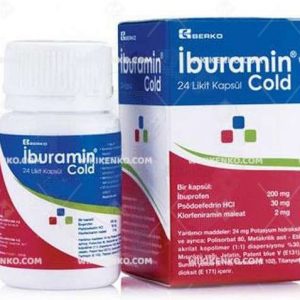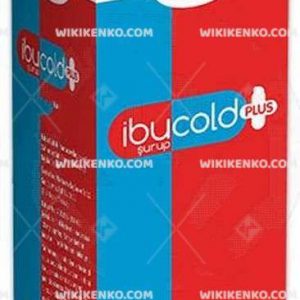Inartro
Inartro Hyaluronic Acid, a therapeutic marvel, stands as a beacon of hope for those grappling with compromised joint mobility and pain, whether arising from post-traumatic or degenerative conditions. This injectable solution, based on sodium hyaluronate, offers not only respite but also a chance at renewed joint vitality.
| Dosage form | |
|---|---|
| Pack size | |
| Potency | 48 Mg/3Ml 1X3Ml |
| Manufacturer | |
| Origin | |
| Generic Name (Ingredient) | Hyaluronic Acid 48 Mg 3 Ml |
Assuming your emergency circumstances for this product, visit Urgent Quotation page. Besides, for any pharmaceutical questions, please ask us in the comments section.
Description
Composition and Purity Inartro boasts a formulation of buffered physiological sodium hyaluronate, with a remarkable 1.6% concentration. Its purity is a testament to its quality, with a molecular weight ranging between 800 and 1,200 kDalton.
Restoring Joint Health
A Synovial Fluid Substitute Inartro Hyaluronic Acid steps into the role of a synovial fluid substitute. It meticulously revives the physiological and rheological attributes of joints that have fallen prey to adversity. This function is particularly valuable in cases where joint mobility dwindles, and pain becomes a constant companion.
Application and Dosage
Intra-Articular Administration Inartro is administered intra-articularly, ensuring targeted delivery to the affected joint. The recommended dosage entails a 3 ml infusion of the product once every 2-4 weeks. This regimen may extend to a maximum of three infiltrations, unless healthcare guidance suggests otherwise. If further treatment cycles are deemed necessary, a prudent waiting period of six months is advised. Remarkably, the discretion of medical practitioners allows for the simultaneous treatment of multiple joints, tailoring therapy to individual needs.
Storing Inartro
Storage Protocol To preserve its efficacy, Inartro should be stored in a cool and dry environment, away from direct light. The expiration date reflects the product’s integrity when stored in an intact package.
Precautions and Warnings
Who Should Avoid Inartro Inartro Hyaluronic Acid should be avoided in specific scenarios:
- If muscle function is compromised, rendering muscles incapable of contraction.
- In cases of extreme sensitivity to the active ingredient or any auxiliary substances.
- During pregnancy and breastfeeding.
- When the possibility of pregnancy exists without the use of effective birth control methods.
- When the patient is under 3 years of age or displays signs of muscle weakness.
- If there is a history of epilepsy or a heightened risk of epileptic seizures.
Manufacturer: İntrafarma İlaç
Producer of Quality Inartro Hyaluronic Acid is proudly manufactured by İntrafarma İlaç, a company committed to enhancing human health since its inception. This reputable entity contributes high-quality, reliable products to the healthcare sector.
Side Effects
Hyaluronic Acid’s Safety Profile Hyaluronic acid, the pivotal component of Inartro, generally presents a safe profile for usage. Nonetheless, as with all medications, it may exhibit certain side effects.
Common Side Effects:
- Pain
- Redness
- Itching
- Swelling
- Bruising
Rare Side Effects:
- Bleeding
- Blistering
- Burning
- Coldness
- Skin Discoloration
- Pressure Sensation
- Hives
- Infection
- Inflammation
- Lumps
- Numbness
- Rash
- Scarring
- Soreness
- Stinging
- Tenderness
- Tingling
- Ulceration
Pregnancy and Breastfeeding
Safety During Pregnancy and Breastfeeding While hyaluronic acid is considered safe during pregnancy and breastfeeding, due to insufficient data, it is advisable to err on the side of caution and refrain from usage during these periods.
Mechanism of Action
Hyaluronic Acid’s Role Hyaluronic acid, the cornerstone of Inartro, operates as a lubricant and shock absorber within the joints. It effectively diminishes friction between articular cartilages in synovial joints during movement.
Onset of Action
Variable Response The onset of action associated with Inartro Hyaluronic Acid can exhibit variability from person to person. Research suggests that noticeable improvements in pain and function can manifest as early as the 6-week mark following a single injection of hyaluronic acid. Notably, the average duration of efficacy extends to 8.2 months. However, these timelines are subject to individual variations, necessitating personalized healthcare guidance.
Conclusion
Inartro Hyaluronic Acid emerges as a powerful ally in the quest for joint vitality. Its composition, applications, and considerations converge to offer respite to those grappling with joint-related challenges. The potential for enhanced well-being, marked by improved mobility and reduced pain, underscores the significance of this injectable marvel.
Key Insights
| Aspect | Details |
|---|---|
| Active Ingredient | Sodium hyaluronate (1.6%) |
| Composition and Purity | Buffered physiological solution; molecular weight: 800-1,200 kDalton |
| Primary Function | Restoration of synovial fluid properties in compromised joints |
| Administration | Intra-articular injection; 3 ml dosage every 2-4 weeks |
| Storage Guidelines | Cool, dry storage away from light |
| Precautions | Various scenarios, including age restrictions and epilepsy risk |
| Manufacturer | İntrafarma İlaç – A trusted producer of healthcare solutions |
| Common and Rare Side Effects | Varied side effects, typically mild; contact healthcare provider if persistent |
| Safety During Pregnancy and Breastfeeding | Caution advised due to limited data |
| Mechanism of Action | Lubrication and shock absorption in joints |
| Onset of Action | Individual variation; potential improvement within 6 weeks; duration varies among patients |
Disclaimer: This information serves as a reference and should not replace professional medical advice. Always consult healthcare professionals for personalized guidance on medication usage
1 review for Inartro
Use the form below to report an error
Please answer the questions as thoroughly and accurately as possible. Your answers will help us better understand what kind of mistakes happen, why and where they happen, and in the end the purpose is to build a better archive to guide researchers and professionals around the world.
The information on this page is not intended to be a substitute for professional medical advice, diagnosis, or treatment. always seek the advice for your physician or another qualified health provider with any questions you may have regarding a medical condition. Always remember to
- Ask your own doctor for medical advice.
- Names, brands, and dosage may differ between countries.
- When not feeling well, or experiencing side effects always contact your own doctor.
Cyberchondria
The truth is that when we’re sick, or worried about getting sick, the internet won’t help.
According to Wikipedia, cyberchondria is a mental disorder consisting in the desire to independently make a diagnosis based on the symptoms of diseases described on Internet sites.
Why you can't look for symptoms on the Internet
If diagnoses could be made simply from a textbook or an article on a website, we would all be doctors and treat ourselves. Nothing can replace the experience and knowledge of specially trained people. As in any field, in medicine there are unscrupulous specialists, differences of opinion, inaccurate diagnoses and incorrect test results.





Lucia –
Inartro 3 fiale
Medical Guidance Center –
Hello Lucia, this is WikiKenko,
I kindly request more clarification regarding your statement.